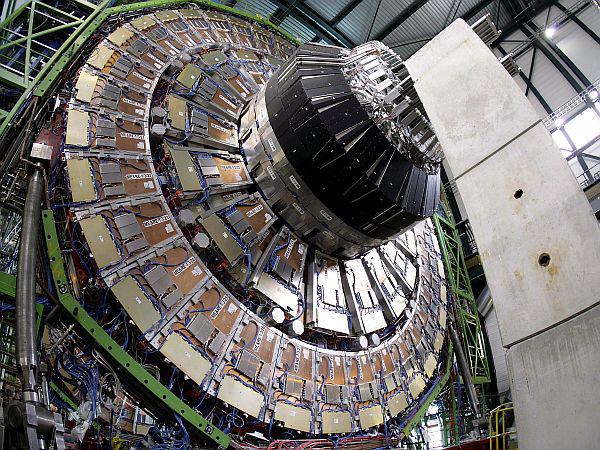
However, due to the unstable political situation and deterioration in the economic position of the country of that time, the resolution to implement all necessary procedures for Slovenia to obtain the status of a candidate for CERN membership was not followed up. It was finally enacted in the middle of December last year by the current government and the science minister, Dr Maja Makovec Brenčič.
On 16 December in Geneva, she signed an association agreement with CERN Director Fabiola Gianotti, whereby Slovenia acquired the status of associate member. This marked the country’s first step towards membership, and in five years Slovenia should become a full member.
The country has in fact been collaborating with CERN on research for a number of years, so ties are already well-established. The signing of the agreement should see collaboration intensify, and opportunities have opened up for Slovenian companies, especially for high-tech ones. Cooperation will also expand in the area of education. "It is right that we should continue to weave together the great CERN family," said Minister Makovec Brenčič in Geneva.
Associate membership of CERN offers full access to all programmes
Even during the period of associate membership, researchers as well as companies and other target groups will have full access to all the programmes conducted by CERN. Associate membership of CERN will therefore give Slovenian scientists and engineers access to the research infrastructure and technological projects being conducted at CERN. They will also be able to use and create high-tech products in the company of leading experts from all over the world.
Alongside research activities, CERN has broad scope for programmes of education and training at all levels. In the period of associate membership, CERN offers to various groups of its members possibilities such as scholarships for young researchers, employment of researchers at CERN, schools for teachers, summer schools for undergraduate students, schools and promotional activities for school pupils, exhibitions about the work of CERN, and more.
Associate membership of CERN will principally offer Slovenia full access for scientists and engineers to the research infrastructure and technological projects being conducted at CERN. Moreover, it will provide the use and creation of high-technology products in the company of experts from all over the world, which will aid the transfer of these advances to the Slovenian environment. We should also emphasise the promotion of a non-conventional approach to problem-solving, which produces highly trained experts capable of working outside narrow scientific fields, and the transfer and use of the detection methods used in high-energy physics to other areas (medicine, environmental monitoring and so forth).
Above all, membership of CERN represents a clear orientation for Slovenia, whereby it seeks to become a high-tech society contributing its own share among the group of most advanced nations to the further development of the world, and at the same time sees prospects for taking an appropriate share of the economic benefits that arise from these efforts. This is thus a great opportunity for Slovenia.
Strong, modern, well-used and internationally integrated research infrastructure
Based on the Development Plan for Research Infrastructure (NRRI) and the Research and Innovation Strategy of the Republic of Slovenia (RISS), both of which were adopted in 2011 and apply for the period up to 2020, the Ministry of Education, Science and Sport supports the development, capacity and research infrastructure in Slovenia, and involvement in international research infrastructures. In the definition of research infrastructure, both the NRRI and RISS refer to the European Strategy Forum on Research Infrastructures of 2008, or what is called the ESFRI Roadmap, which states that research infrastructures are capacities, means or services comprising major equipment or a selection of instruments, along with sources of knowledge such as collections, archives and databases.Such features drive innovation and are the primary condition for research work.
The use of research infrastructures enables responses to important social challenges, such as those seen in the fields of human health, climate change, the ageing population and energy supply, and facilitates successful monitoring and responses to changing social relations and the behaviour patterns of individuals, while aiding industry in developing new high-capacity materials and medicines and in monitoring the environment.
During implementation of the Development Plan for Research Infrastructure 2011-2020 (NRRI), the speed and achievement of targets mainly depend on the annual budget and state of public finances, as well as on the availability of human resources and the level of organisation among the related scientific communities. The development of the national research infrastructure has been financed in large part via the Slovenian Research Agency (ARRS), and, in addition to this, from 2010-2013 the eight centres of excellence provided a considerable direct input to the national research infrastructure from ERDF funds. These funds also served to finance the linking and establishing of a critical mass of highly trained personnel in all of Slovenia’s regions to meet the requirements of economic development and competitiveness (the “creative core”). From 2011-2015, over 97 million euros were earmarked for investment in research infrastructure.
Today Slovenia is involved in 10 priority international projects under the NRRI, it has an associate agreement signed with CERN, and membership of the LifeWatch project is also planned.
Upon revision of the NRRI 2016, the list includes five new projects, and there are two more on the list for further upgrading. International project priorities are also determined in view of the priority fields of the Smart Specialisation Strategy.
Nataša Gerkeš, Sinfo

































































